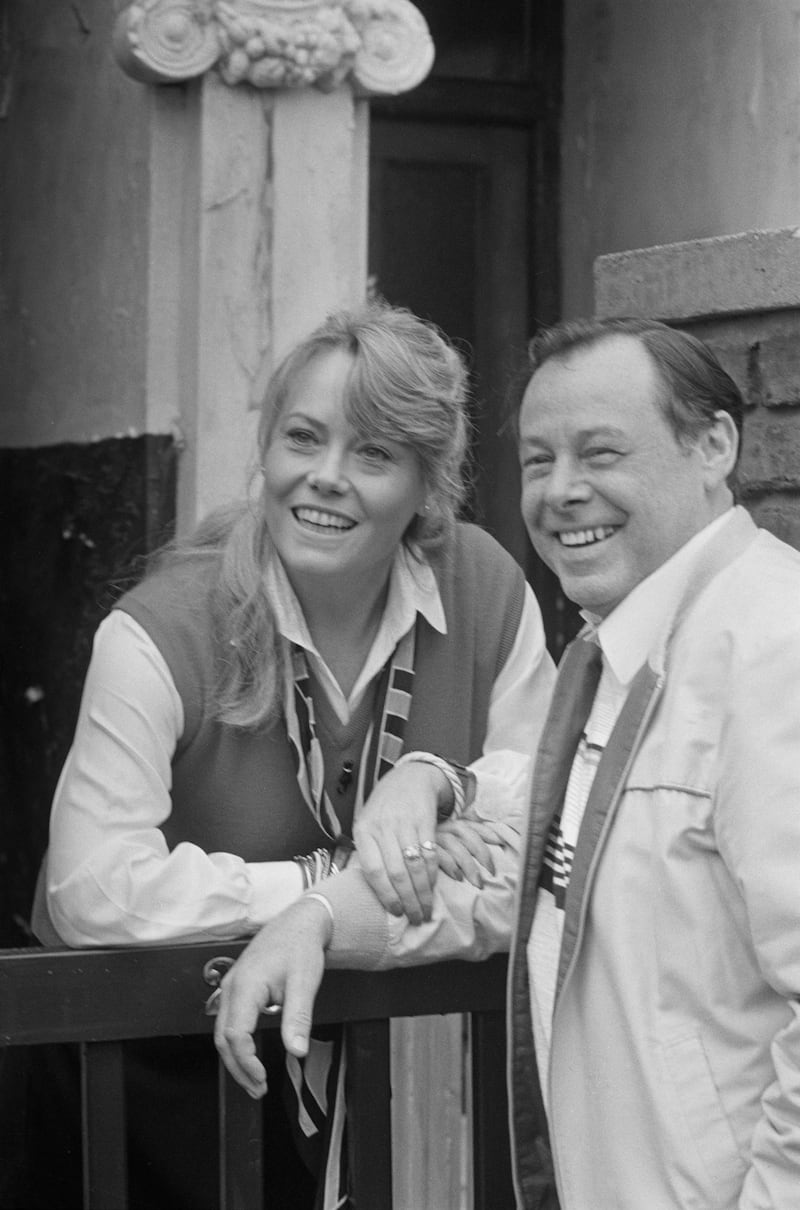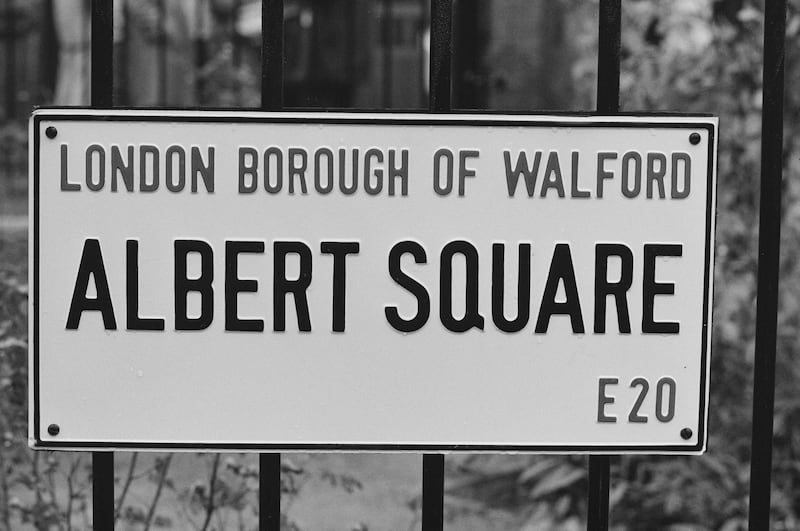EastEnders is marking its 40th anniversary, but as the BBC’s longest-running soap reaches for the birthday candles and miniature party hats, there is one chapter in its history it will be eager to gloss over.
We refer to the three notorious “Irish” episodes of September 1997, where the series travelled to Ireland and depicted the country as a grim, resentful, booze-fuelled hellscape. Hugely controversial at the time, the instalments have been scrubbed from the official EastEnders timeline and are not officially available to view. Indeed, they have become something of a lost grail for EastEnders completists – a glimpse into the forbidden the BBC would rather you not see.
Still, with a little legwork, the first episode, at least, can be unearthed online. How bad is it? The answer is pretty terrible – though it isn’t quite the Father Ted-minus-the-gags atrocity exhibition of popular recollection.
Instead, it more closely resembles a tacky stab at Beckett or Seán O’Casey by someone who has had the gist of Waiting For Godot explained to them in the pub but never actually bothered to sit through a production and where every single Irish person is an Anglophobic gombeen in a perpetual state of booze-mediated torment.
READ MORE
The EastEnders Oirish Odyssey begins when the character Pauline Fowler (Wendy Richard) learns she has a half-sister in Ireland – given up for adoption by her mother, Lou Beale, shortly after birth. Quicker than you can say “Guinness” in a condescending English accent, the Fowler and Beales families are at Dublin Airport collecting their rental car and planning a trip to the fictional town of “Kilnameen”.
Kilnameen is revealed to be close to Ballyhaunis, Co Mayo, and is not to be confused with the actual townland of Kilmaneen in Tipperary – though the scenes were filmed largely in towns and villages around Dublin. Wherever they are headed, they do not receive a hearty welcome. “A village called Kilnameen – that’s new to me,” says one hostile local when they stop for directions. “There is a town called Kilnameen. THIS is Kilnameen ... a town.”
This leads to the notorious “donkeys-in-the-street” scene, as the Fowlers and Beales arrive at the main drag of what looks like Stepaside, Co Dublin (details of the actual filming locations are hard to track down). A cattle mart has been set up, sheep baa and donkeys indeed mill about.
But when arriving at their accommodation, the visitors are again on the receiving end of some choice of Irish hospitality. “The Fowlers ... ?” says the landlord as they attempt to check in. “We have a problem here ... That name doesn’t ring a bell. A party is expected from England. The Towlers.”
“We’re the Towlers!” comes to reply. “You’re the Towlers ... but what if you’re not?” says the landlord, both dense and unhelpful. At this point, the Fowlers are ready to give up – one character suggests they “hire a couple of donkeys and go from town to town”.

They are then approached by the local drunk named Seán. “He still thinks he can drink 20 pints at a time when in reality his limit is 17,” says the landlord. Seán – later revealed to be Pauline’s brother-in-law – is a creep who soon has the Englishwoman in his sleazy sights.
“Here’s a fine looking specimen of the female form, wouldn’t you agree Patrick?” he says to the barman. “I’ve every respect for what the lass has hidden under her jumper. Refusing a drink from me is very bad for Anglo-Irish relationships.”
But Pauline does refuse, and Seán, well into his 17 pints, “accidentally” pours a drink over her. EastEnders would continue in this vein for two more episodes, prompting an immediate backlash.
“It was nothing like life in the real Ireland of today. When did you last see a donkey walking along our streets? The EastEnders production team haven’t got a clue about modern Irish society; they are living in the Dark Ages,” one viewer told the Daily Mirror.
[ BBC says sorry for its Oirish EastendersOpens in new window ]
Even the Irish Embassy in London weighed in. “EastEnders is a powerful and very concentrated medium,” said Ted Barrington, Irish ambassador to the UK. “People are upset at the caricature and misrepresentation of Ireland. Irish people can laugh at themselves but, the point is, this is one of the most popular programmes on British television, and it decided to present an image of Ireland that conforms to old-fashioned negative stereotypes. It selected an unrepresentative range of stereotypes. Cultural and racial stereotyping tends to create barriers between people.”

The BBC was inundated with complaints, which were upheld by the UK’s broadcasting regulator: “The intention was positive rather than negative, but the result was clumsy and irritating.”
That wasn’t quite the end of EastEnders’ Irish escapades. The episode introduced the character of Mary – Maggie’s granddaughter who, along with her cousin Mark (Todd Carty), moves to Albert Square and becomes an EastEnders regular for 18 months. Mary was played by 22-year-old Melanie Clark Pullen, who found the overnight fame that came with EastEnders to be overwhelming.
“I just didn’t realise what an obsession EastEnders is over in England,” said Pullen, who was born in Bray, Co Wicklow. “I found it extremely difficult adjusting to London. I didn’t know my way around, but everyone knew me. I would ask the way to Marks & Spencer’s and get: ‘Oh, my God – it’s Mary off the telly.’ And I’d get 16-year-old boys going: ‘Hello Mary, I’ll show you a good time.’ I started to suffer panic attacks and felt increasingly isolated. It was worse coming straight from Ireland.”
She left the soap in 2000 and struggled to adjust, saying, “I wouldn’t say I had a breakdown but I experienced feelings of depression. I had to see a counsellor for a while.”
Pullen continued to act, appearing in a number of costume dramas and writing and directing her own plays and shorts. She died of a brain tumour in March 2022 at the age of 46 – a sad coda to a low point in the history of one of Britain’s best-loved soaps.
EastEnders: 40 Years on the Square is on BBC One, Monday at 8pm















